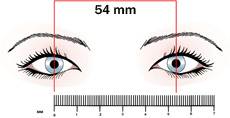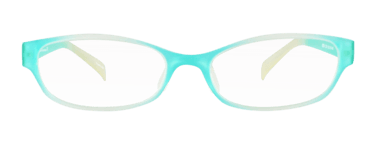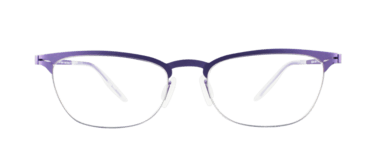Lens Quality
 |
|
You want to be sure that your glasses are of great quality. |
When a pair of glasses is ordered, you want to be confident that the lenses are of good quality and conform to the prescription. A lens is actually a work of art, considering the many things that need to be accomplished on such a small piece of material. Lenses are high tech, and crucial for the quality of your sight and eyes. So attention to every detail is required. What exactly should you look at to judge the quality of a lens?
Power
The lens needs to provide the exact power required for a customer’s prescription. Not higher, and not lower. The international quality norms specify a very narrow band of allowed deviation.
Lens Placement
To ensure optimal vision correction to the customer, the lenses need to be correctly placed in the frame. A high quality lens that is incorrectly placed is of no use. The main factors that need to be taken into account when placing the lenses are:
 |
|
Pupillary distance needs to be accurate in your glasses. |
- PD (distance between the pupils)
- Vertical fitting height
- Cylinder axis
- Frame style
Power Distribution
For progressive lenses, the power distribution will define how comfortable the lenses will be for the user. This needs to exactly conform to the original design of the lens.
Coatings and Their Effectiveness
Coatings are expected to provide long term protection. The adherence needs to be superb. Customers should not encounter any problems with the coating disappearing when using their glasses. Visio-Rx applies the following coatings as a standard:
- Hard coating
- Anti-reflection coating
- Basic hydrophobic coating
- UV protection coating
 |
|
It's crucial that a cylinder gets mounted in the frame at the correct degree. |
The coatings need to be of high quality and provide the intended effect. Not just initially, but also after intensive use.
Cylinder
For astigmatic people, corrective values for cylinder need to be exact. And it's extremely important that the lens then gets mounted at the exact position as is described on the prescription.
Light Transmission
Light is transmitted through the lens. Of importance is the percentage of light transmitted through the lens. This needs to be optimal for the specific material of that lens.
Mechanical Strength
Lenses sit immediately in front of our eyes, hence special attention needs to be paid to the mechanical integrity of the lenses.
 |
|
Drop ball tester in use at the Visio-Rx lab: A ball is dropped from a certain height to test the shatter-resistance of a lens. |
Testing
In order to ensure that each lens is of high quality, multiple tests are done in the lab at Visio-Rx. Some are done for each lens, others are performed on a sample of lenses. Here's a list of equipment and the tests they perform:
- Thickness meter: to measure a lens’ center thickness;
- Lens/focimeter: to measure the lens power and cylinder;
- Dual lens mapper: to measure power distribution of a progressive lens;
- Spectraphotometer: measures the light transmission and distribution thereof to check lens and coating properties;
- UV meter: to measure UV protection;
- Drop ball test: This is an FDA prescribed standard test to measure mechanical integrity;
- Scratch tests: to determine the quality of hard coatings;
- Heat test: to determine the adherence quality of coatings.
- SPF-1: a special computerized instrument to perform the final inspection of the glasses to ensure the lenses have been correctly placed in the frame, based on all prescription details.
Quite a selection of equipment and quality control steps to ensure that those little lenses do exactly what they are supposed to do. At Visio-Rx, we take your eyes seriously. 
Recommended for you












